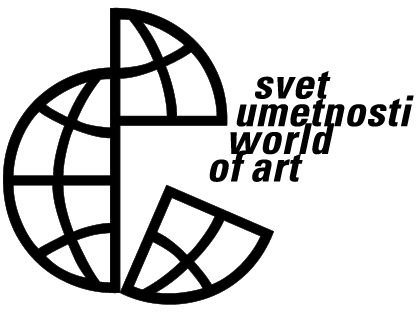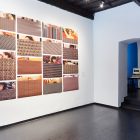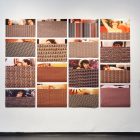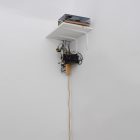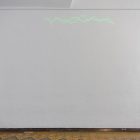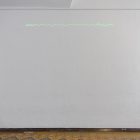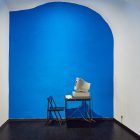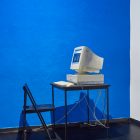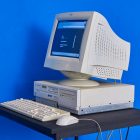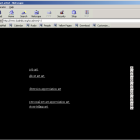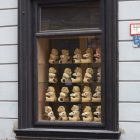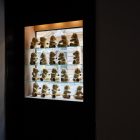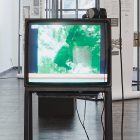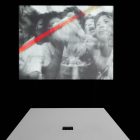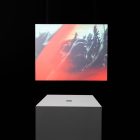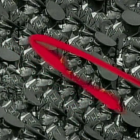control < cultivate > evolve
Soros Center for Contemporary Arts – Ljubljana (1993–1999). Its Organisation and Impact
16 May – 6 June 2019, Škuc Gallery, Ljubljana
Artwork description: Tia Čiček, Kristina Ferk, Lara Mejač, Anja Seničar, Borut Savski (Cirkulacija 2)
Photo: Klemen Ilovar
Michael Brodsky, Transmission Interrupted
Digital print, 1991 – 1995
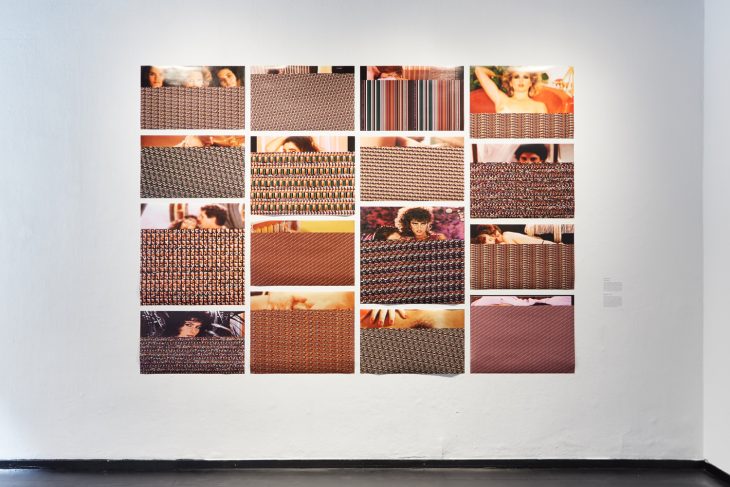
The images were created by downloading publicly available GIF files found on the online underground pornographic Bulletin Board System networks. By deconstructing and decoding the files, the artist changed the default-protocol-transfer of the encoded binary file, causing a distortion as a result. This alteration caused the images to deconstruct yielding a coloured interference pattern from the desynchronisation of an improperly deciphered image. The triggered error functions as a barrier to the complete viewing of the original image, which in these pictures becomes a form of censorship, despite the fact that the content of the separate images remains readable. By triggering distortions, Brodsky draws attention to the Puritan nature in American culture, which is ambivalent regarding sexual activity and imagery. The fear of the interactive nature of the new digital media and their networking with pornographic content has resulted in very real consequences in the US legislation, which has been used to control content that should, however, be decided by the consumers themselves.
Cirkulacija 2, To sleep – perchance to dream …
Sound collage, 2019
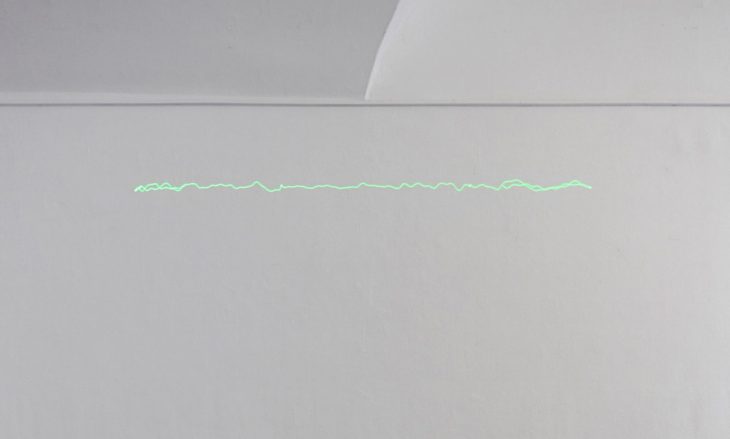
The soundtrack of this exhibition is the work of three members of Cirkulacija 2 (Borut Savski, Stefan Doepner and Boštjan Leskovšek), which we conceived as a sound collage of the audio associations of the threesome, that intertwine in real time, thus forming into an ever-new continuous combination of sounds. This is how – in the manner of sleep-perhaps-dream – of me rely random logical associative interconnections – we remember the nineties – the years of our youth – and the offshoots of “media art in real-time”.
[Cirkulacija 2]
Vuk Ćosić, A Day in the Life o a Net.artist
Net.art, 1995
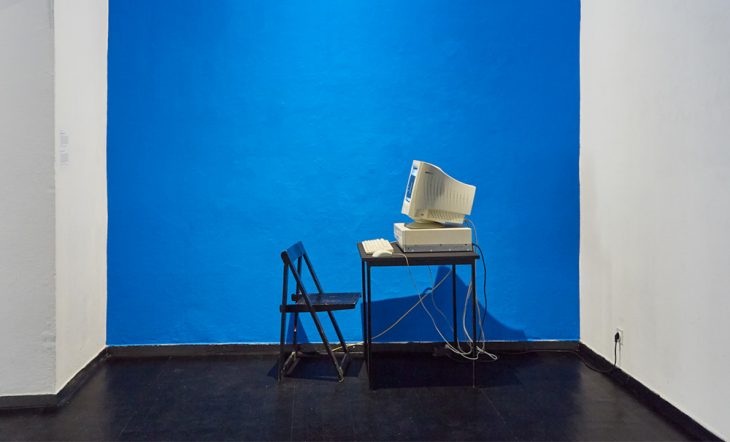
The website A day in the life of a net.artist is a review of the artist’s daily digital activities. The projects are hidden behind the artist’s designations, which are only revealed to the visitor when he scrolls through the website. The work does not offer a complete insight into the artist’s work, but shows the features of the online projects, which can be both artistic and useful – the webpages were created as an Internet archive and promotional material for individual artists. The work was commissioned for the exhibition Media in Media and is displayed on a stationary computer in the gallery at this time, in an attempt to simulate the artist’s working environment at the time the work was produced.
Computer equipment generously provided by the National Museum of Contemporary History of Slovenia.
IRWIN, Uršula Noordung
Artistic action, 1994
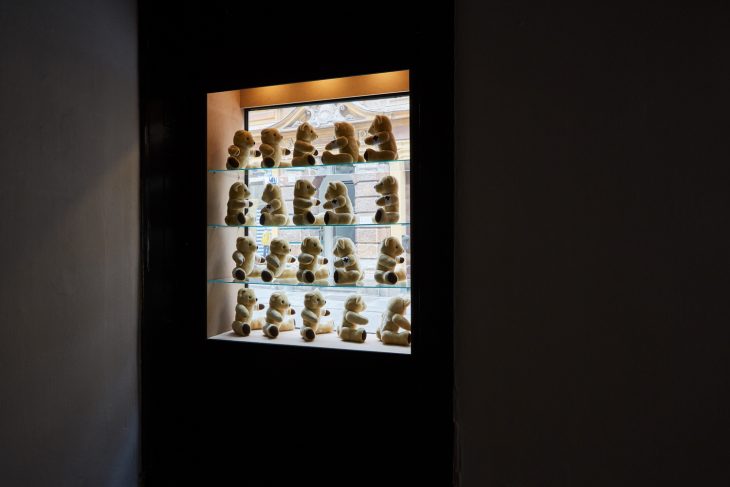
The central element of the Uršula Noordung artistic action by the IRWIN collective was the launch of a new product into the commercial network. The IRWIN collective gave a serial product – a factory-produced plush teddy bear – a white wrist strap with a black cross and returned it to the market, by which it was able to observe and draw attention to the processes that accompanied the product on the market. The plush toy Uršula Noordung was first exhibited in 1994 at an electronics fair as a substitute presentation for the Iskra Sysen company and was later put on sale at retail price at the Mladinska knjiga publisher as well as the Metalka store. Through the sale of the item, the artistic action divided the identity of the consumer into the buyer of a toy and the buyer of an artwork, thus opening up the issues of the status of the work of art and its commodification. In addition, the role of the child’s toy within the ideological, economic and cultural context is questioned. Toys play an important role in assuming dominant social values and defining norms, usually possessing an educational function that acts in unobtrusive and innocent ways, consequently exerting control and indoctrination.
Marko Peljhan, The Park of Culture
TV situation, 03’47’’, 1996
Režija: Marko Peljhan, montaža: Aljaž Rogelj, Marko Peljhan, glasba: Srečko Bajda, produkcija: Projekt Atol, SCCA-Ljubljana, VPK
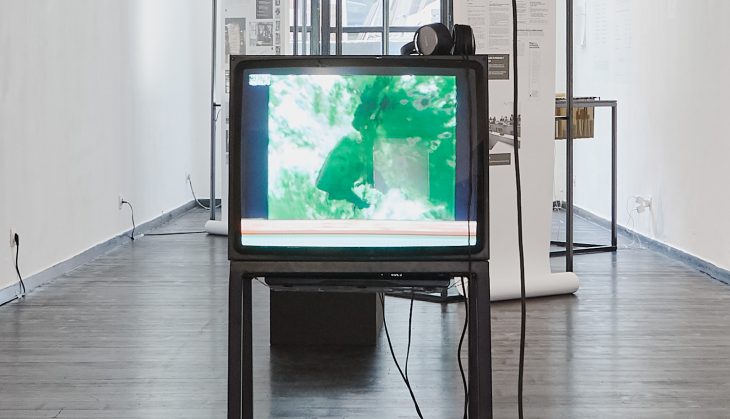
The TV situation, as the format was labelled by the artist, is an edit of television footage showing human observation of the world and the universe – from frames shot from space stations, from the sea and from the Earth’s surface, to frames taken from submarines, control rooms and monitoring agencies. The footage is supplemented by two sliding texts. Under the quotations from Sun Tzu’s The Art of War, a series of television newscasts is shown at a fast pace, which are supposed to inform the user about current events in condensed form. The video illustrates the artist’s reflection on the all-pervasive nature of the media and the reality they mediate. By regulating and distributing information, a medium can also be a means of control, as viewers are always at the receiving end of selectively edited content. The work is based on the artist’s personal experience – the encounter with open information channels, which provided an insight into the system of information before the final, public media selection was made. With the final statement, They are observing you. Switch on your transmitter and observe them, Peljhan addresses the viewer, directly opening up the issues of privacy, observation, surveillance and control.
Nataša Prosenc Stearns, Big Brother’s Room
Interactive video installation – projection and podium with image control, 1996
Video: arhivski posnetki TV Slovenija, glasba: Milko Lazar
Nevenka Šivavec, Inteligentni ne marajo množice, spremno besedilo k razstavi Soba Velikega brata v Likovnem salonu Celje, 1997. Z dovoljenjem Nevenke Šivavec.
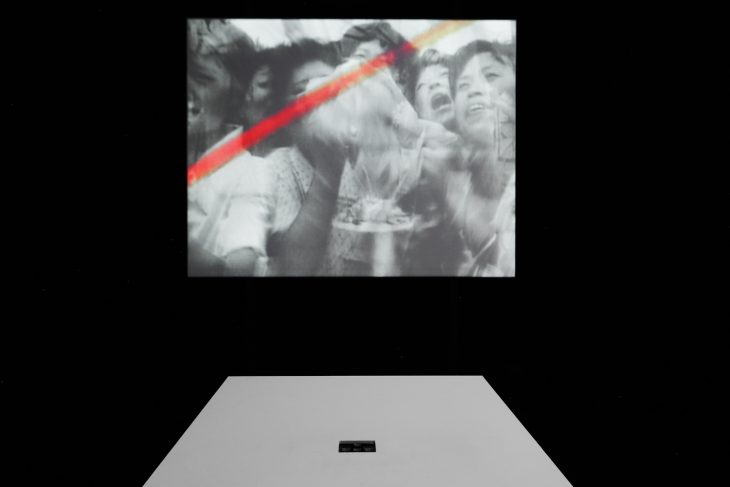
The interactive spatial installation includes a video, a lectern with image and voice controls, which invites the viewer to the lectern. The video, composed of black and white archive footage from Television Slovenia, overlayered with a connecting red graphic element, shows the crowds at military gatherings, sports events and during religious ceremonies. The visitor behind the lectern can follow the instructions, thus taking an active role in viewing and rewinding the footage and becoming part of the control enforcement. Anyone can take on the role of the control enforcer, by which the installation accentuates the artist’s attitude to controlling the masses and the role of the individual.
FOTOGALERIJA
Fotografije: Klemen Ilovar, zajemi spletne strani in video del.
